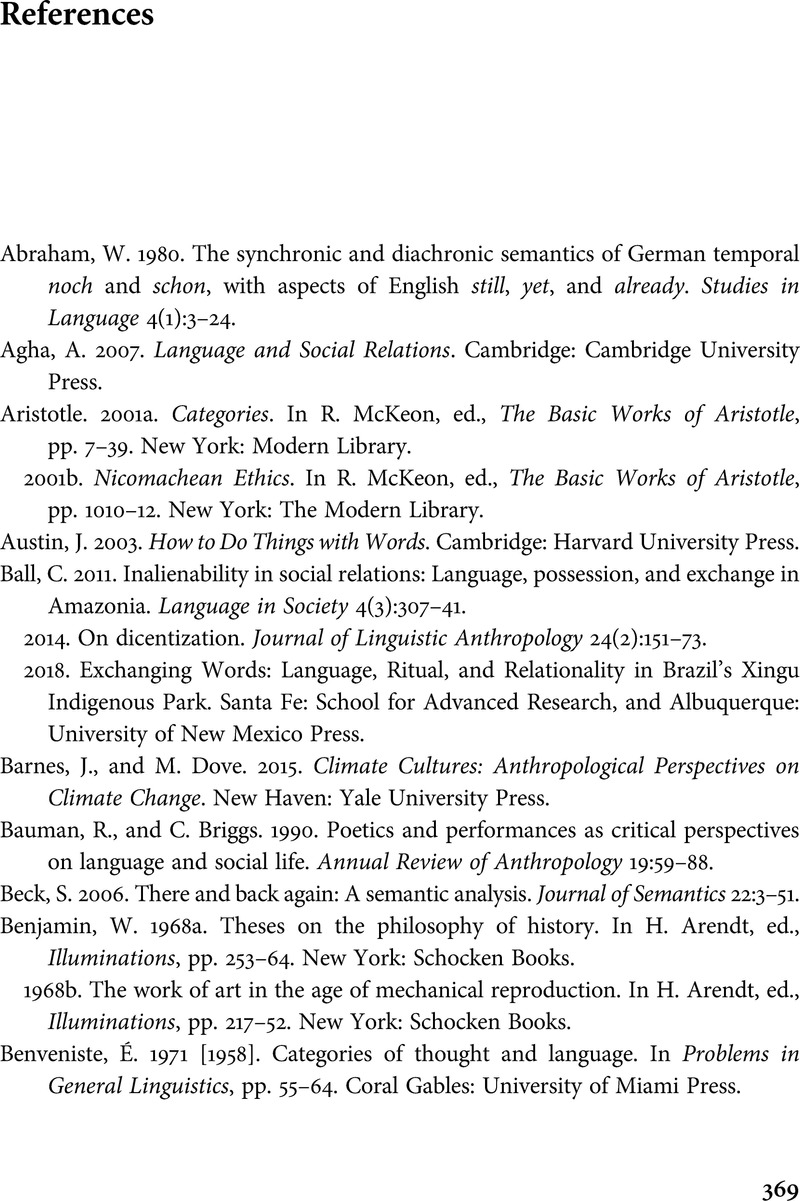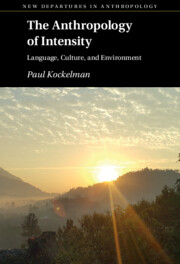Book contents
- The Anthropology of Intensity
- New Departures in Anthropology
- The Anthropology of Intensity
- Copyright page
- Dedication
- Contents
- Figures
- Tables
- Acknowledgments
- Abbreviations
- Introduction: Intensity
- Part I Grounds
- Part II Tensors
- Part III Thresholds
- Conclusion: The Ecological Self
- References
- Index
- References
References
Published online by Cambridge University Press: 05 May 2022
- The Anthropology of Intensity
- New Departures in Anthropology
- The Anthropology of Intensity
- Copyright page
- Dedication
- Contents
- Figures
- Tables
- Acknowledgments
- Abbreviations
- Introduction: Intensity
- Part I Grounds
- Part II Tensors
- Part III Thresholds
- Conclusion: The Ecological Self
- References
- Index
- References
Summary

- Type
- Chapter
- Information
- The Anthropology of IntensityLanguage, Culture, and Environment, pp. 369 - 378Publisher: Cambridge University PressPrint publication year: 2022

